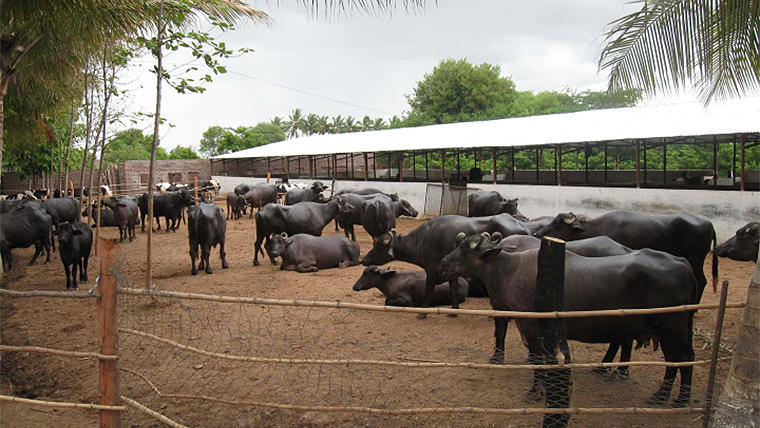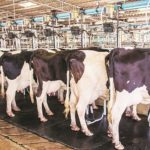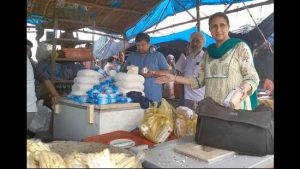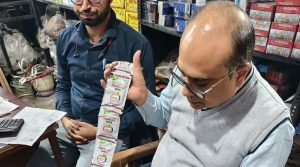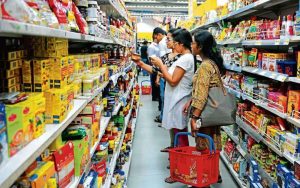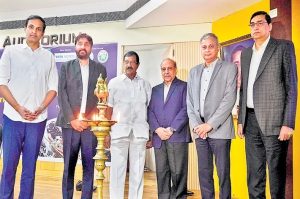
Crises also present opportunities for reform. The Centre has, through a series of initiatives, ushered in reforms in various sectors, including agriculture. The backdrop of Covid-19 has provided stakeholders an opportunity to reorient the thinking on dairy. For this to happen, there will be changes required, definitive action, and a different growth trajectory for the industry, notwithstanding the fact that, today, India is the largest milk producer in the world.
The livestock sector—within it, dairy—needs to play a larger role in the prime minister’s goal to double farmer’s income by FY23. Further, promoting dairy will also lead to a more equitable income, and this aspect needs to be appreciated. Milch animal holding is far more equitable than land holding. About 85% of the total farmers are small and marginal. While they together own about 47% of farmland, they own about 75% of milch animals. The productivity of milch animals in India is around one-eighth of the global average. Land prices in India are very high, which makes running large dairy farms unviable. So, dairy farming in India will continue to be dominated by small and marginal farmers.
Estimates suggest that 48% of the milk produced is consumed by dairy farmers themselves, and 52% is marketable. A study undertaken by a private agency has estimated that of the total surplus, 20% is processed in the cooperative sector, 30% by branded private dairy companies, and the rest by the unorganised sector (milk for sweet shops, loose milk, etc). Uttar Pradesh, Andhra Pradesh, Rajasthan, Gujarat, Maharashtra, Madhya Pradesh, Haryana, and Punjab together account for 65% of the country’s milk production. The processing capacity, measured in terms of milk chilling infrastructure (cooperatives), is highly skewed, with Gujarat alone accounting for 46% of this. Future growth of dairy must come from newer areas, and with modernised technology suited for small dairy farmers.
At present, most of the milk processing plants with cooperatives are old and need to be expanded or modernised. The technology in these plants may not be energy efficient compared to available modern technologies. It is estimated that additional capacity of 75 lakh litres per day, modernising capacity of 75 lakh litres, and milk processing capacity of 12.5 crore tonnes per day can be augmented with an investment of Rs 5,000 crore. The transparent payment system and modernisation of procurement process are key drivers for organised milk marketing infrastructure, and can be achieved by installing Automatic Milk Collection Stations and Bulk Milk Cooling Units, respectively. Modern procurement process also aids hygienic milk production, boosting state efforts to promote export-oriented dairy industry.
The recently announced Animal Husbandry Infrastructure Development Fund of Rs 15,000 crore can address the infrastructure requirements of the sector.
On the production and productivity end, gaps in artificial insemination (AI) and breeding services have to be overcome—for covering at least 60% of the breedable population, the requirement is 200 mn doses of AI, against which only 115 mn doses are being produced. With land increasingly being put to non-agricultural uses, the supply constraint regarding feed and fodder resources is real! It is estimated that percentage of gap to demand in case of concentrates, dry fodder, and green fodder is 39%, 36%, and 57%, respectively. Propagating the smallholder dairy model compounds the problem. With respect to credit, there are two challenges: flow of credit vis-a-vis the potential; and mismatch between regional flow of credit to the AH sector and livestock resources.
Technological developments have opened up various possibilities for the dairy sector that need to be mainstreamed and leveraged to enhance productivity. IoT and data analytics has to be harnessed for digitising milk production, procurement, processing, and marketing. Such digitisation may focus on solutions for herd management, smart milk procurement, cold chain management, livestock insurance, fintech for dairy farmers for seamless transactions, etc.
While these are not firm, some estimates suggest refrigeration penetration in India is not more than 10-20% at the household and retail level—lower, in rural India (1-2%). Refrigeration is critical in tropical countries when it comes to growth of normal dairy products as opposed to ultra-high temperature products.
There will be two major drivers of demand for dairy products—increase in income levels, and urbanisation—spurring household demand for packaged dairy products like ghee, curd, butter, etc. The demand for value-added products (VAPs) like paneer and cheese is expected to grow more in the HoReCa (hotel, restaurant, and café) segment. By 2020, the share of VAPs in the organised milk market is likely to increase to 30% from the current 23%. VAPs bring in higher profits for dairy companies than liquid milk, which provides a window-passing higher profitability to farmers in the form of milk procurement price. Dairy cooperatives have largely catered basic milk, butter, processed cheese slice, and ice cream for many decades. Thus, though a large portion of milk would be sold as processed packed liquid milk, focus would be on enhancing the share of dairy cooperatives in the VAP segment.
The future of dairy in India hinges on supporting smallholder dairy farmers, promoting the sector in newer areas, creating (and modernising) dairy infrastructure, bridging the gaps in fodder requirements, and giving a technological face-lift to the sector. Dr Verghese Kurien, the doyen of Indian dairy industry, lived by the values of integrity, dedication, and commitment, and always espoused the cause of the smallholder dairy farmer. Time is ripe to take the take the dairy cart forward on a fast lane!
The author is Chairman, NABARD. Views are personal.
